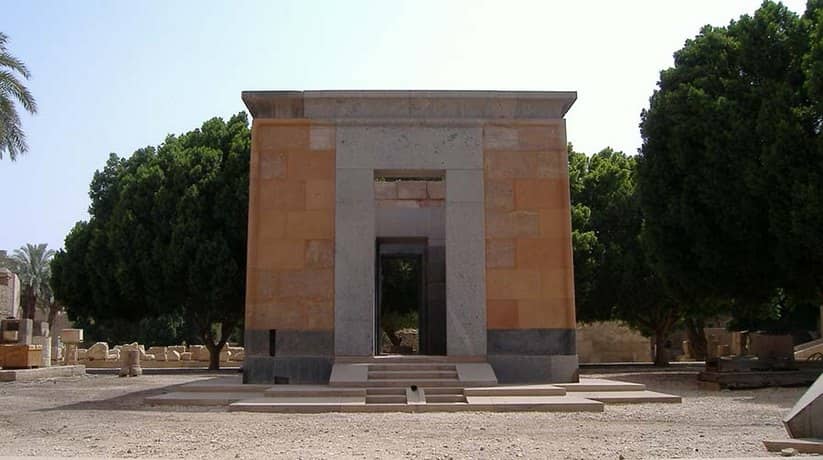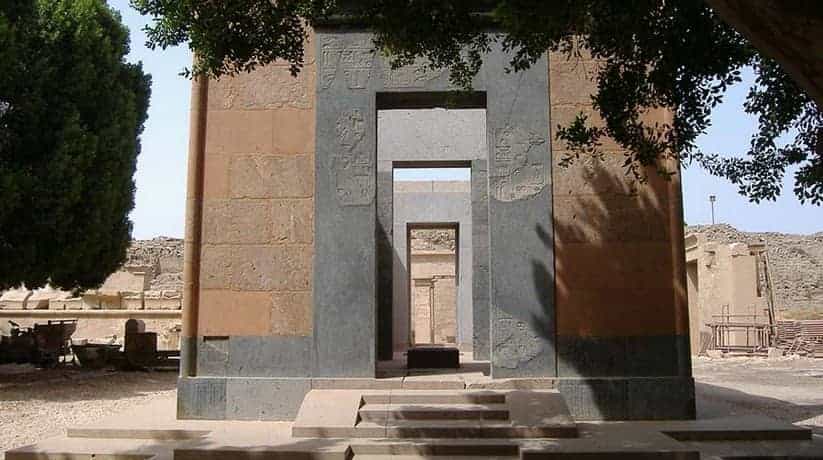Hatshepsut Red Chapel Luxor Egypt tours, prices, booking
Hatshepsut Red Chapel Luxor was a barque shrine and the White Chapel of Senusret I. Furthermore, the chapel built with a base and doorways of black granite. It is also with walls of red quartzite, from the quarry which known as Gebel Ahmar or “Red Mountain”. Of course, the latter stone explains why the shrine known Hatshepsut Red Chapel Luxor (Chapelle Rouge). In fact, the natural color of the red quartzite varies. Therefor, the ancient craftsman painted all the block a uniform red color. It begun about four years before Hatshepsut’s death in about 1483 BC. Her nephew and successor Thutmose III maybe continued work on the chapel. But in fact, it never finished.
The white chapel of Senusret I is in the Open Air Museum at Karnak. The archaeologists rebuilt the White Chapel. It took many years to arrange the layout of the structure. The structure is like a big jigsaw puzzle on paper. In 2001, the Supreme Council of Antiquities decided to rebuild Hatshepsut Red Chapel Luxor. The process, like all our modern lives, happened much quicker. They fed the architectural elements of the building into a computer. The results are splendid. What really sets the small monuments, such as the White and Red Chapels, is their well preserved state. The Pharaoh, Amenhotep III decided to enlarge the temple at Karnak. It was by adding a new facade in the form of two entrance pylons. He pulled down many monuments which he no longer thought relevant.
Further details about Hatshepsut Red Chapel Luxor:
Moreover, he also put their stone sections in the core of the structure. This was the Third Pylon at Karnak. A large part of the massive Third Pylon of Amenhotep III at Karnak toppled over. It was at the end of the 19th century. In fact, it was because of an earthquake. Pierre Lacau was the director general of the Egyptian Antiquities Service. He ordered his director of works at Karnak, Henri Chevrier, to repair the structure. It was in 1924. Henri had to completely dismantle it to do so. In the process, he discovered some 951 blocks. The blocks belonged to a total of eleven different structures used as fill within the pylon. In fact, many of these blocks damaged. Moreover, their encasement in mortar in the pylon preserved their inscriptions and decorations.
Henri was also responsible for reconstructing the White Chapel of Senusret I many years ago. But the blocks from Hatshepsut Red Chapel Luxor remained dismantled until the 21st century. The blocks, numbering about 315, studied to work out their original order. In fact, it was not an easy process. Unusually, most of the blocks contained a complete scene. Thus, they do not overlap on to adjacent blocks. In fact, they never overlap on the horizontal joints. Some researchers believe that, this indeed the first “prefabricated” building in history. It is also with its decorations complete before the building’s erection. The belief of researchers was due to the way in which these decorations occur.
More details about The Red Chapel of Hatshepsut Luxor:
This of course made it difficult to identify the sequence of blocks within the structure. Also, about half the blocks were missing (some 40 to 45 percent). So modern blocks of stone cut from the same material as the original required. In some instances, modern brick also incorporated. It then plastered over and painted to match the original colors. To assemble the building, a study of the notches and dovetails in the blocks studied. This work resulted in a large structure. It is over seventeen meters in length and over six meters wide. In fact, it now dominates the Open Air Museum. It is a striking building with its black granite and red stone walls. It has three doors at the same level and of the same dimensions. In fact, the structure divided into two chambers. It was with a low plinth in the larger of the two rooms.
Further details about Hatshepsut Red Chapel Luxor:
The rooms used as a base for the barque of the God Amun. Amun’s image carried in procession between the Temples of Karnak and Luxor. It was during the annual celebration that took place at the height of the Nile Flood. In the center of the chapel located a drain for the waters. It used in absolution during the celebration. Furthermore, The decorations of Hatshepsut Red Chapel Luxor are rich, with gold paint filling the hollows of the engraving. However, there is only unfortunate aspect of this construction. It is that now many of the inscribed blocks are more difficult for visitors to see. In fact, many of the carved scenes high up in the walls and not always oriented for viewing.
The inscribed blocks are like Hatshepsut and Thutmose III interacting with Amun-Min and various other gods. They also include scenes from the Opet festival, the dedication of the chapel. Moreover, they include the establishment of the queen as ruler of Egypt. They also include the recording of nome divisions. It suggested that a good pair of binoculars taken along for a visit if any serious study intended.















